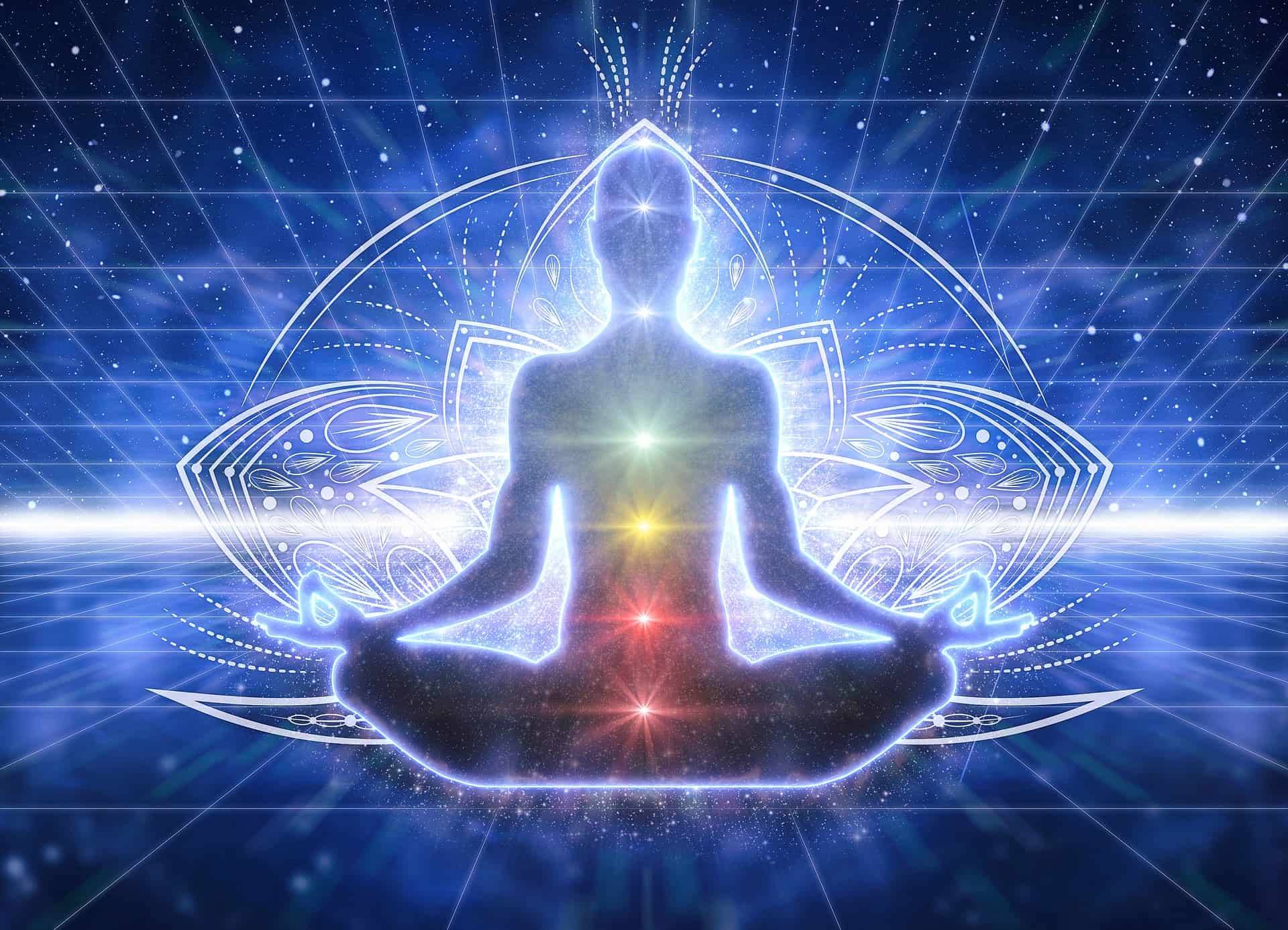
The Seven Chakras
The chakras are energy centers in our bodies. We find these wheels of light described in the ancient teachings of Yoga from India. Yoga is the spiritual path of working with our physical and emotional energy to gain enlightenment or nirvana by harnessing the kundalini, which is imagined to be a snake coiled at the base of the spine. The chakras mark the seven waystations energy travels along the spiritual journey, from root to crown – into cosmic consciousness.The Sanskrit word chakra, which means wheel, has come to be associated with seven centers of the human body. According to the ancient upanishads (scriptures of yoga), the chakras develop alongside the process of meditation and visualization, rather than being parts of our bodies that are always there. Either way, many people find them to be useful ways of thinking about sevenfold ideas such as: the musical scale, the seven colors of the rainbow (and gemstones), and even the planets of our solar system.
The most common understanding of chakras is that there are seven energy vortices in the human body, from root to crown, which align energy along the spine. These may correspond to organs in our body, but also exist in a purely spiritual dimension within. There are many descriptions of the energy body in different yogic teachings, some which include additional chakras such as in the hands and feet, or even above and below the body. Basically, there are seven chakras that are most important. Science meets ancient yoga by interpreting these seven centers to correspond with “nerve plexuses” along the spine, and also endocrine glands (like the pituitary and pineal).
The wisdom of working with these powerspots in the body is experienced through many kinds of practices such as yoga, meditation, energy healing, aromatherapy, traditional Asian medicine systems like Ayurveda, clairvoyant readings, and crystal healing. Sound healers also work with the subtle sounds of the yogic chakras and relate those to music through tones, such as specially tuned singing bowls and tuning forks. Looking at art such as banners and crystal carvings, you might notice that seven sanskrit syllables are often written within the geometric mandalas (or yantras) given to each chakra. These are (from bottom to top) lam, vam, ram, yam, ham, and om (twice). These sounds relate to the element associated with each: earth, water, fire, air, ether (akasha), plus the cosmos or divine union.
Each chakra has a Sanskrit name, an associated location in the physical body, a color, mandala pattern, and other associations. The seven main chakras used in tantric meditation are visualized along the spine from root center to the top of the head. These are meeting places of what the yogis call channels, which run up the spine and throughout the whole body. Different traditions of tantra give various colors to each chakra, whether for its element, lotus-flower petals, or energy quality of the center. Here we can connect the seven main chakras to the seven colors of the rainbow, as has become popular in modern esoteric chakra studies.
chakra – sanskrit name and meaning – location – color – element – mandala
| Root Chakra | muladhara | root | perineum/cervix | red | earth | square |
| Sacral Chakra | svadishthana | established self | sacrum | orange | water | crescent moon |
| Solar Plexus Chakra | manipura | jewel city | navel | yellow | fire | triangle |
| Heart Chakra | anahata | unstruck | sternum | green | air | interlaced triangles |
| Throat Chakra | vishuddha | purity | throat | blue | ether | circle |
| Third Eye Chakra | ajña | knowledge | forehead | indigo | mind | bindu – dot |
| Crown Chakra | sahasrara | 1000-fold | top of head | violet | Universe | 1000 petal lotus |
Associations with the chakras:
1 groundedness, security
2 emotions, creativity, desire and sensuality
3 power, healthy ego, confidence
4 love, compassion, and healing
5 communication, inner voice, clairaudience
6 knowledge, vision, clairvoyance
7 spiritual connection, God and Universe, selflessness